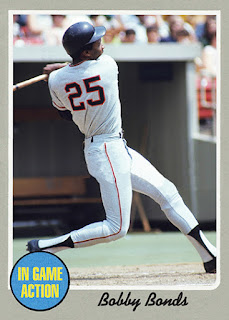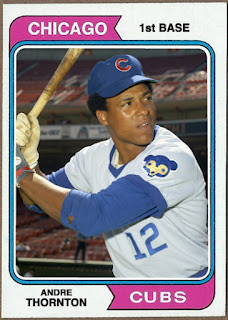Up on the blog today, we continue on with my on-going "expanded
league-leaders" thread, with this entry focusing on the National
League's top "firemen" of the 1976 season showcased on a 1977 card:
We
begin with the closer for the World Champion Cincinnati Reds, aka the
"Big Red Machine's" Rawly Eastwick, who followed up a wonderful rookie
year in 1975 with an even better campaign in 1976.
In his
Sophomore year Eastwick compiled 37 "points", that is, a combined 37
wins and saves (11 wins along with a league-leading 26 saves), along
with a very nice 2.09 ERA over 71 appearances and 107.2 innings.
Those numbers got him a fifth-place finish in the Cy Young race as well as a 13th-place finish for MVP.
The
year prior, he finished third in the Rookie of the Year Award when he
led the N.L. with 22 saves, while posting a record of 5-3 over 58 games,
with a 2.60 ERA.
Sadly for him however, he'd develop
arm-problems and never reach those type of numbers again, even though
his career lasted until 1981, when he appeared in 30 games for the
Chicago Cubs after bouncing around between 1977 and his final year.
Behind
him with 30 points, the ageless Charlie Hough, who posted a record of
12-8 with 18 saves for the Los Angeles Dodgers, appearing in 77 games
and posting a brilliant 2.21 ERA over 142.2 innings, all in relief.
It's
amazing to think that he'd be a reliever another SIX years through his
age-33 season before being converted to a starting pitcher by the Texas
Rangers, and going on to post double-digit wins for NINE straight years!
I
loved watching him pitch his knuckler when the Rangers were facing the
New York Yankees as a kid, and I'm happy to say I got to see him pitch
on more than one occasion in person at Yankee Stadium. What a treat!
The
man pitched until he was 46 years of age, finishing up with the Florida
Marlins in 1994, with 216 wins, a 3.75 ERA and 61 saves over 858 games,
440 of those starts, striking out over 2300 batters along the way.
In
third place with 29 points, a converted infielder who made the switch
to pitching work enough to forge out a 12-year career, New York Met Skip
Lockwood, who finished his 1976 season with a record of 10-7 along with
19 saves.
He appeared in 56 games for the Mets that year,
posting a very nice 2.67 ERA over 94.1 innings, striking out 108
batters, which works out to a very nice 10.8 strikeouts per nine
innings.
Originally a third baseman with the kansas City
Athletics who made his Big League debut in 1965 at the age of 18, he
retooled himself into a pitcher and made it back to the Majors as one of
the Seattle Pilots of 1969, appearing in six games.
A starter
with the team after they moved to Milwaukee in 1970, he made the switch
to the bullpen when he came to the Mets in 1975 and would stay there
the rest of his career, saving as many as 20 games while posting an ERA
as low as 1.49 twice (1975 and 1979).
After 24 games with the
Boston Red Sox in 1980, he retired, with a record of 57-97 over 420
games, with five shutouts and 68 saves.
Not too shabby for a light-hitting infielder!












.jpg)
.jpg)









.jpg)
.jpg)





.jpg)




.jpg)

